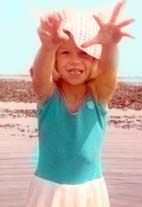

There is a severe thunderstorm warning issued for parts of the south east.
A thick band of storms...
 Torrential rain and flash flooding. People are advised to take shelter.
Torrential rain and flash flooding. People are advised to take shelter.I wonder what is beyond that thick wall of water falling from the sky?

Did I see a glimmer?
Rain easing.
 Scattered showers.
Scattered showers.
Sun Ah.
Rain easing.
 Scattered showers.
Scattered showers.Sun Ah.
Underneath the storm is like walking under a waterfall into another world.
These 4 brooches about storms sweeping across the Wallum were created during the recent floods when we received about half a meter of thundery rain in 4 days and the side of the hill slipped away. Making them was difficult, the first batch lost to rising waters and when I was seperated from my etching bath for way too long. After that I was too careful with the etching and achieved conservative and boring results. Despondency.
These 4 brooches about storms sweeping across the Wallum were created during the recent floods when we received about half a meter of thundery rain in 4 days and the side of the hill slipped away. Making them was difficult, the first batch lost to rising waters and when I was seperated from my etching bath for way too long. After that I was too careful with the etching and achieved conservative and boring results. Despondency.
So I pretended to be a risk taker and put the bath in the hot sun which had finally emerged. Forgetting about it, I discovered these rugged results some hours later. Weathered brooches. Eroded by the torrents of rain and beaten by the sun. Plucked to safety minutes before total disintergration.








 Inspired by what the students dared to do in class after informing them that "it probably wouldn't work but give it a go anyway", I found I was able to get quite delicate impressions in the cuttlefish bone. These castings are only 5cm long, to give an idea of scale. I also pressed some of the tiny tea tree seed cases into the cuttlefish, closed up the mould and poured molten scrap silver from the crucible to make these 2 pieces of double sided sheet:
Inspired by what the students dared to do in class after informing them that "it probably wouldn't work but give it a go anyway", I found I was able to get quite delicate impressions in the cuttlefish bone. These castings are only 5cm long, to give an idea of scale. I also pressed some of the tiny tea tree seed cases into the cuttlefish, closed up the mould and poured molten scrap silver from the crucible to make these 2 pieces of double sided sheet: 
 The castings are relief style owing to a brass sheet inner cutout mold. And the cuttlefish pattern shows its wavy texture in the background. Quite appropriately too I would say, as the cuttlefish bones were all found along beaches adjacent to Wallum/heath coastal areas like Kangaroo Island and Bribie Island.
The castings are relief style owing to a brass sheet inner cutout mold. And the cuttlefish pattern shows its wavy texture in the background. Quite appropriately too I would say, as the cuttlefish bones were all found along beaches adjacent to Wallum/heath coastal areas like Kangaroo Island and Bribie Island.
